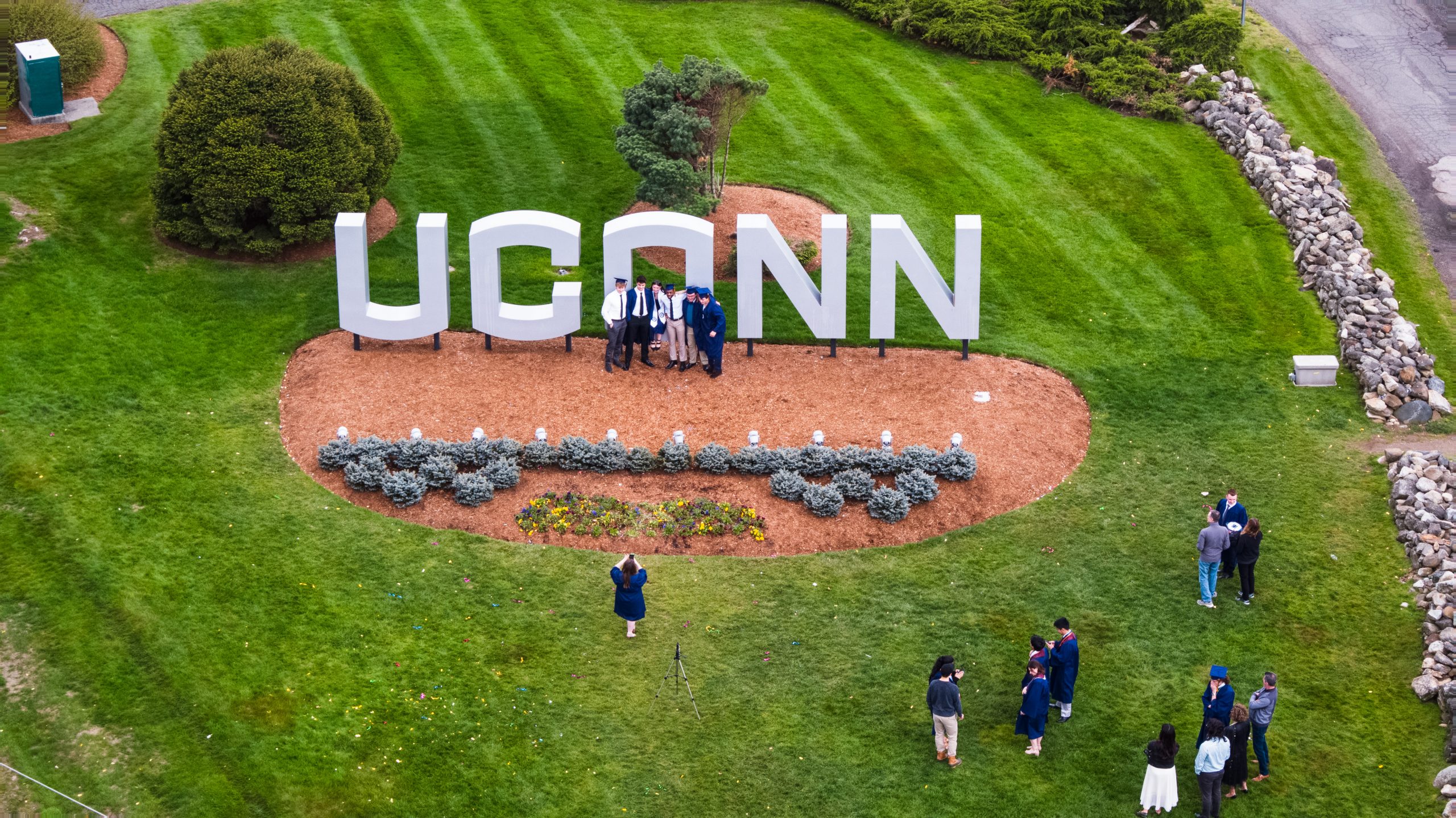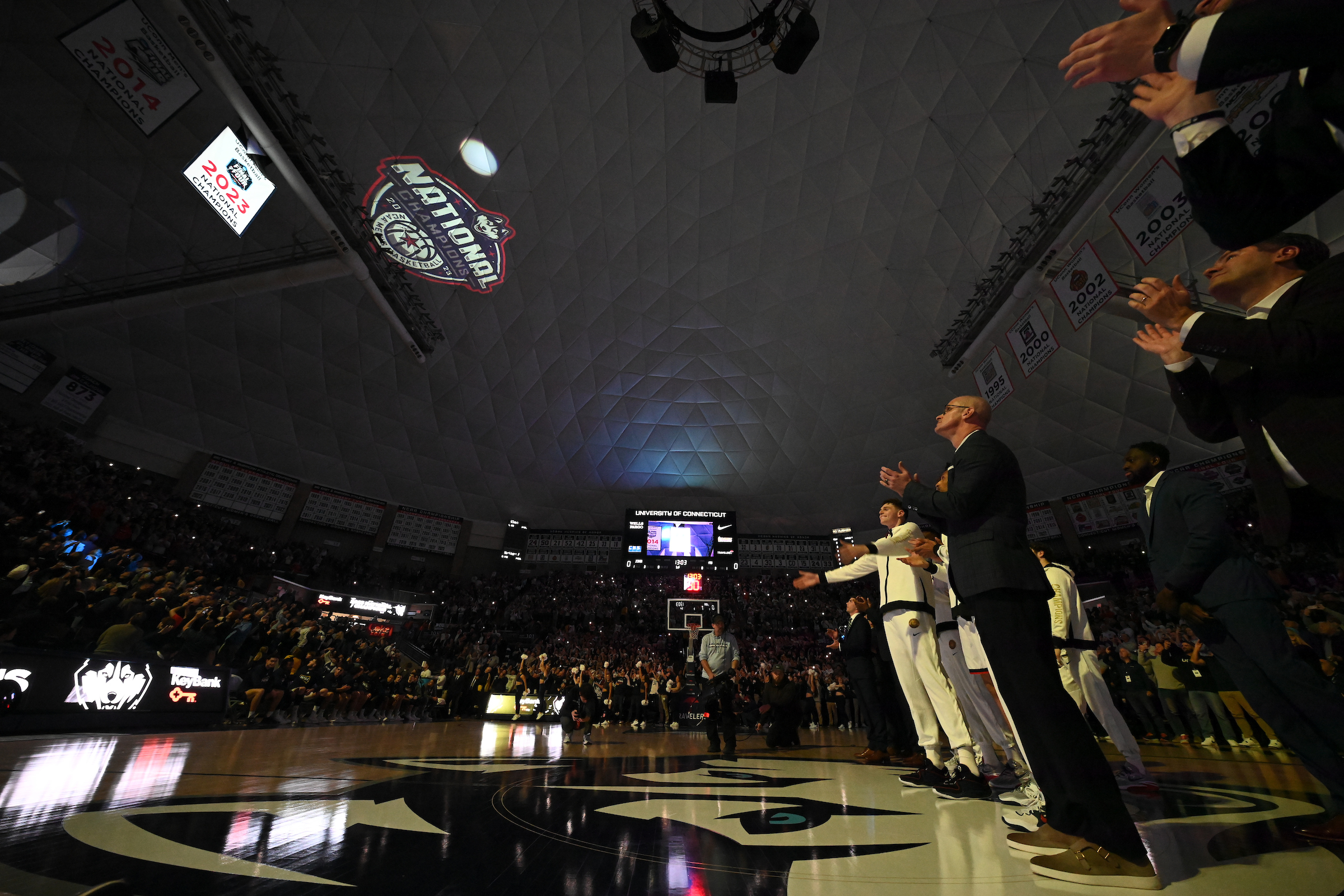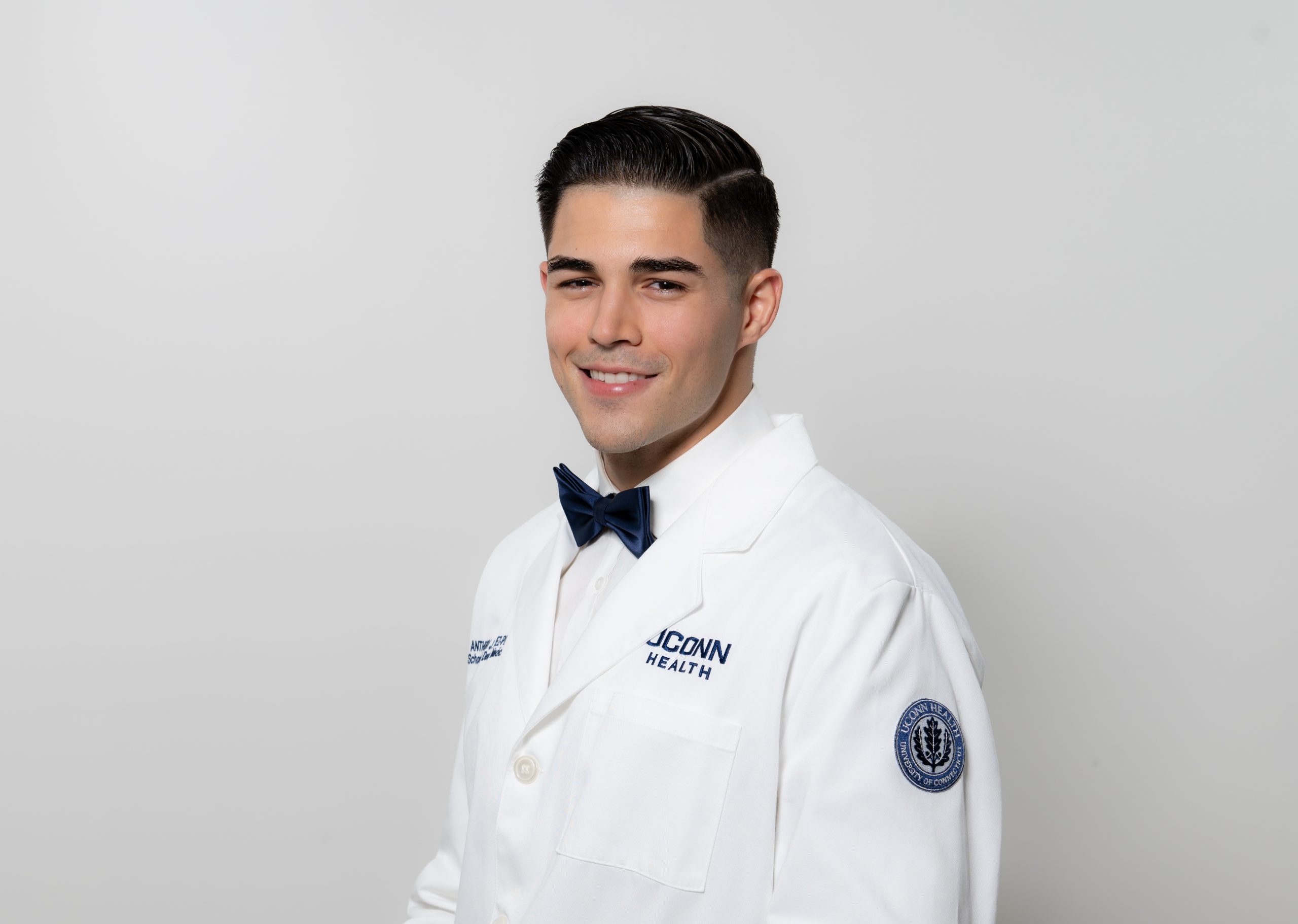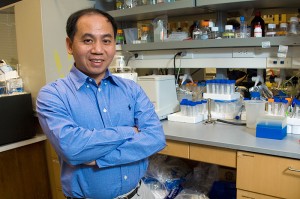
A new, interactive exhibit at the Mystic Aquarium that allows children to learn about the genetic code and extract DNA from fruit is based on the research of a UConn professor whose project examines the genetic changes that lead to toxic red tides.
Senjie Lin’s exhibit is the outreach component of a four-year, $1 million National Science Foundation grant that Lin, a professor of marine sciences, is using to try and determine which genes are active when a red tide is formed and toxins are produced in dinoflagellates, a microscopic plant, or phytoplankton. Lin’s research on phytoplankton is focused on dinoflagellates because of their multi-faceted features: they provide food for animals in the sea and are indispensable for the growth of coral reefs, yet they are also major contributors to a coastal environmental hazard, red tide and marine toxins.
Dissecting the DNA codes that make dinoflagellates unique and able to form red tides and produce toxins may someday help scientists find genetic markers that will predict when a toxic red tide will form and what its intensity will be. Toxins from red tide can spread up the food chain, from shellfish to marine animals to humans, causing illness and, in some cases, death.
“Understanding the DNA structure is the key to cracking the secret behind dinoflagellates’ ability to form red tides and produce toxins, and that endeavor is accessible to anyone, as you can experience in the exhibit,” said Lin, who hopes the exhibit will trigger interest in science among children.
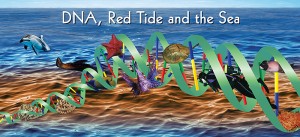
Upon entering the exhibit, guests pass through a large arch that reveals the genetic code of mitotic cyclin, a universal protein that controls cell division, including in red tide-producing dinoflagellates. A genome similarity dial can be spun to reveal how humans’ genetic makeup compares to that of various animals, plants, and other organisms, including the chimp, puffer fish, bacteria, and rice. At the Codon Hoedown, visitors can build a virtual DNA strand by following the correct chemical base sequence, or code, on a dance pad. In a nearby lab area, UConn science students guide children as they extract DNA from fruit and capture it in a necklace they can take home.
A team of craftsmen at Mystic Aquarium fabricated the DNA arch, a 10-foot-high DNA double helix sculpture, and DNA lab, to round out the exhibit. Currently, the DNA extraction portion of the exhibit is available on weekends only. The rest of the exhibit, which will be up for a year, is open daily.
The exhibit is part of an established research partnership between Sea Research and UConn, in which graduate students’ marine research is supported by both institutions. In addition, Tracy Romano, senior vice president of research and zoological operations at Sea Research, serves on the faculty at UConn. Working with the National Oceanic and Atmospheric Administration, the two institutions also helped form the I-RICH Consortium, an interdisciplinary graduate training and post-doctoral mentoring initiative that focuses on major problems impacting coastal ecosystems and how these problems relate to human health.
“DNA is the building block of life, and consequently connects us with marine life in many ways,” says Romano. “This exhibit reveals our genetic similarities to various creatures, how genes vary, and the incredible ways in which DNA plays a role in everything, from eye color to species determination to the creation of toxic waters that affect human health and the health of our oceans.”
The Department of Marine Sciences is part of the College of Liberal Arts and Sciences (CLAS). Working with Lin on his research are colleagues at the Scripps Institution of Oceanography, the University of Maryland’s Center of Marine Biotechnology, and the Venter Institute.
A podcast of Lin talking about the project is available on the CLAS website.
